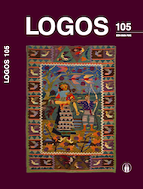Social Memory in the 8th Century Frankish Controversy Concerning the Cult of Images
Social Memory in the 8th Century Frankish Controversy Concerning the Cult of Images
Author(s): Kristina MitalaitėSubject(s): Christian Theology and Religion, 6th to 12th Centuries, History of Religion
Published by: Visuomeninė organizacija »LOGOS«
Keywords: social memory; damnatio memoriae; veneration of images; Francs; religious cult;
Summary/Abstract: This article focuses on social memory as religous memory in the Carolingian late eigth century. In Latin Christian culture Greek icons and religious images were understood in terms of sacred memory. In his treatise Opus Caroli Regis, written in opposition to the Proceedings of the Second Council of Nicea (787), Theodulf of Orleans harshly criticized the condemnation of the participants of the iconoclast council of Hiereia (754). He characterized the anathematizing of their spiritual forefathers at the Second Council of Nicea as a damnatio memoriae, that is, a kind of dishonouring that should not be countenanced by Christian society. In this way Theodulf sought to expose the Greeks’ corruption of social memory arising from their cult of images.
Journal: LOGOS - A Journal of Religion, Philosophy, Comparative Cultural Studies and Art
- Issue Year: 2020
- Issue No: 105
- Page Range: 42-51
- Page Count: 10
- Language: English

